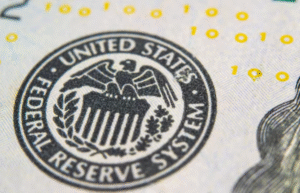#Bitcoin #CPI #Inflation #CryptocurrencyMarket #FederalReserve #USInflationData #BitcoinPrice #RateCuts
In the financial realm, the relationship between inflation data and market movements is closely observed, with the recent US core Consumer Price Index (CPI) release serving as a testament to this dynamic. Specifically, Bitcoin experienced an immediate reaction, dropping by nearly 1.5% to a value of $56,168, following a core CPI announcement that exceeded anticipations. The headline CPI for August 2024 remained in line with forecasts, reporting a 0.2% month-over-month increase and a 2.5% year-over-year growth. However, it was the core CPI, excluding volatile food and energy prices to present a clearer view of underlying inflation trends, that caught the market’s eye with a 0.3% rise against a predicted 0.2%.
This unexpected surge in core CPI suggests underlying inflation pressures that could influence the Federal Reserve’s (Fed) monetary policy decisions. Historically, core CPI has been a more accurate indicator of long-term inflation, providing insight into the inflationary trends without the noise of the more volatile categories. The divergence between expected and actual core CPI figures led to a cascading effect across the cryptocurrency market, affecting not just Bitcoin but also other major cryptocurrencies such as Ethereum, Binance Coin, Solana, and Ripple, which saw declines ranging from 1.3% to 4.6%.
The broader implications of these inflation metrics speak to potential shifts in the Federal Reserve’s approach to interest rate adjustments. Prior to the CPI data release, speculation abounded regarding the Fed’s rate-cut cycle, with the consensus leaning towards a cautious 25 basis points cut in September. Capital Economics analyst Paul Ashworth suggested that despite the rise in annual core CPI, primarily driven by a notable 5.2% increase in shelter prices, the Fed’s anticipated rate cut would align with a more conservative approach to managing inflationary pressures. This analysis was bolstered by the CME FedWatch tool, which indicated an 83% probability of a 25 basis points reduction following the CPI announcement, suggesting a measure of confidence in the market’s ability to navigate potential inflationary challenges.
Looking ahead, the trajectory of Bitcoin and the broader cryptocurrency market appears to hinge on a mix of economic indicators and market sentiment, with the looming US Presidential Elections adding another layer of uncertainty. Despite the immediate market reaction to the CPI data, analysts remain divided on the long-term implications for Bitcoin’s price. Some draw parallels to previous periods of consolidation, suggesting the potential for a new all-time high in the near future. Regardless of short-term fluctuations, there is a consensus among some market observers that Bitcoin’s fundamentals position it for long-term growth, highlighting its resilience in the face of changing economic conditions and policy adjustments. As the market digests the implications of the latest CPI data and looks to the Federal Reserve’s next moves, the intersection of finance and politics promises to keep the cryptocurrency sector on its toes.







Comments are closed.